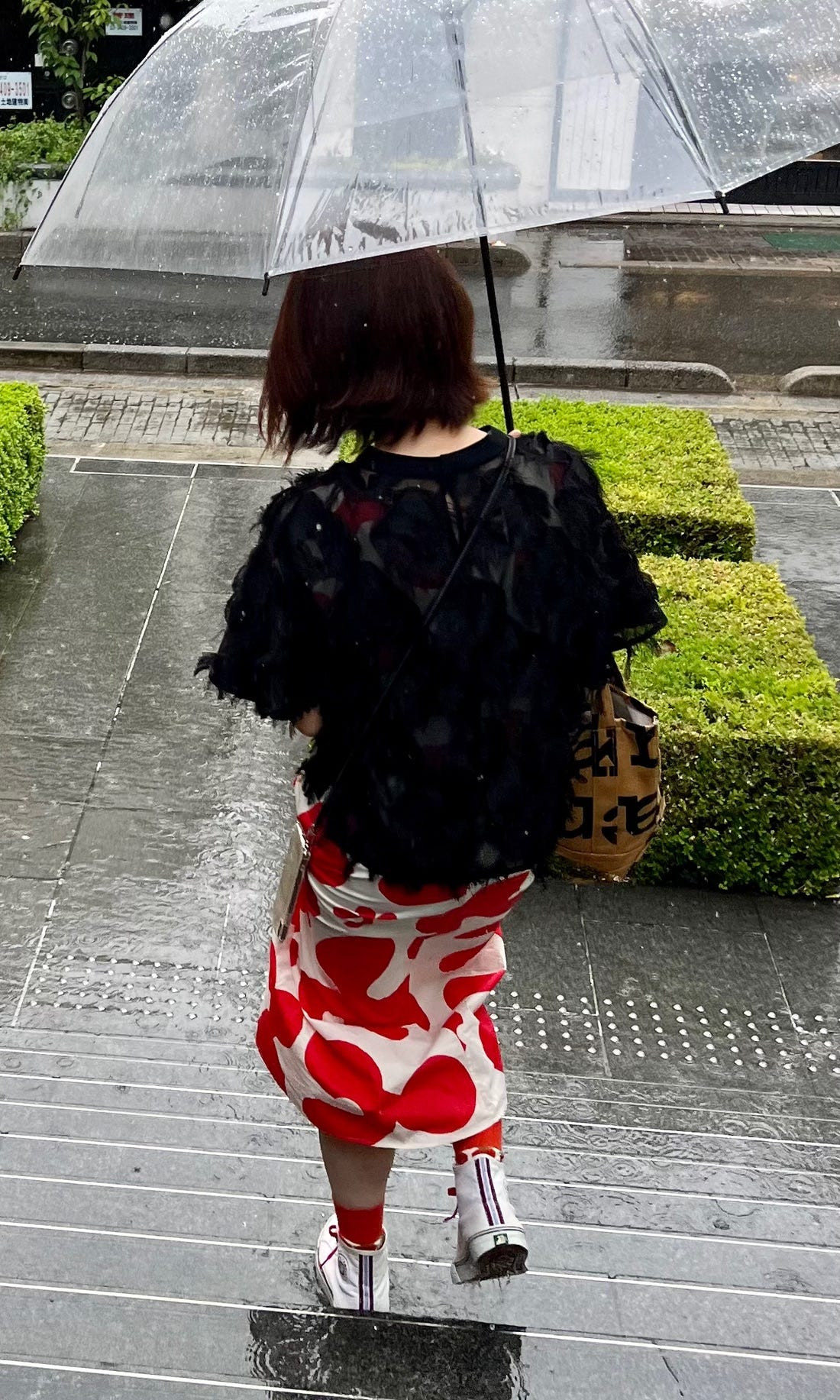Stepping into Japan, particularly the vibrant streets of Osaka, Kyoto, and Tokyo, is like entering a living fashion exhibition. Personal style isn’t just about clothing here; it’s a captivating expression woven into the very fabric of Japanese culture and society. Observing the unique outfits reveals not only individual flair but also the broader cultural forces shaping personal expression in Japan. It prompts questions about the societal influences that contribute to the distinctive Japanese approach to fashion.
The profound influence of iconic Japanese designers like Issey Miyake, Yohji Yamamoto, and Rei Kawakubo of Comme des Garçons is undeniable in Japanese Street Fashion. Since the 1980s, these visionaries have sculpted the nation’s fashion identity. Their impact permeates through all levels of dress, from individuals directly wearing their groundbreaking designs to interpretations and inspirations echoing their distinctive aesthetics throughout everyday street style. Their avant-garde philosophies have become deeply ingrained in the Japanese fashion consciousness.
Reflecting these designers’ philosophies, a prominent feature of Japanese street fashion is the prevalence of exaggerated silhouettes that often obscure the body’s natural form. This stands in stark contrast to Western fashion norms, which traditionally emphasize symmetrical, body-conscious garments designed to accentuate curves and shapes. In Japan, it’s common to see women embracing voluminous dresses, generously cut blouses, and wide, flowing trousers and skirts, creating an aesthetic that prioritizes shape and drape over figure-hugging styles.
An interesting observation during vintage shopping was the prevalence of smaller shoe sizes, with size 35 being remarkably common. This detail offers a subtle insight into average physiques and clothing proportions in Japan, influencing the overall aesthetic of Japanese street fashion.
Oversized shirts paired with trousers are a recurring theme, offering a relaxed yet stylish look that perfectly captures the essence of Japanese street fashion. This combination reflects a preference for comfort and practicality without sacrificing aesthetic appeal.
Recalling previous insights about Japanese fashion norms, it’s noticeable that exposing shoulders, back, and chest is uncommon, mirroring Korean fashion sensibilities. However, leg coverage also stands out as a key element, even in humid weather. While modesty might be a factor, the prevalence of covered legs could also relate to sun protection and a cultural preference for untanned skin.
The frequent sight of UV-protection arm sleeves further supports the idea of sun consciousness in Japanese street fashion. Despite the summer heat, these accessories are embraced, suggesting a strong emphasis on shielding skin from the sun’s rays.
Similarly, observing women wearing leggings under skirts points towards another layer of this trend. Whether driven by modesty, sun protection, or perhaps even an unknown cooling technique, this layering practice is a distinct feature of Japanese women’s street fashion.
For the most part, individuals wearing shorts often appeared to be tourists or expats. While covering legs, shoulders, and backs seems to be the general norm for women, Tokyo reveals a slight deviation, with a small segment pushing these boundaries and experimenting with more revealing styles.
Occasionally, glimpses of gyaru subcultures, like lolita, kawaii, and kei, emerge, reminiscent of the vibrant fashion scene from the 1990s to 2010s. These styles, characterized by mini skirts and short shorts, offer a contrast to the prevailing modest trends, showcasing the diverse range within Japanese street fashion.
Historically, Tokyo street fashion photos from 1980-2017 reveal periods where shorter hemlines were indeed fashionable. Exploring the evolution of Japanese street style over the past decades highlights the dynamic nature of fashion trends and the cyclical return of styles.
On the opposite end of the spectrum, the traditional yukata is a common sight, particularly in summer. While many wearers are tourists embracing Japanese culture, locals also incorporate yukatas into their daily life, especially during festivals or casual outings.
The osoroi code, where family members, friends, or couples coordinate outfits, is another fascinating aspect of Japanese street fashion. This practice, also seen in Korea, emphasizes group harmony and shared identity through coordinated dressing.
The osoroi trend extends beyond families to friends and couples, highlighting the importance of visual harmony and group cohesion in Japanese social aesthetics.
A couple with visible tattoos and sunglasses stood out, prompting reflection on social perceptions. Tattoos in Japan carry a historical association with the yakuza, leading to ongoing stigma and restrictions in certain businesses and workplaces, although this is gradually changing. Similarly, the infrequent use of sunglasses in Japan might stem from a similar association or be seen as overly flashy, conflicting with cultural values of discretion and modesty.
Further examples of captivating Japanese street fashion, each unique and expressive.
Japanese street fashion is a captivating blend of tradition, innovation, and cultural expression. It’s a constantly evolving landscape where individual style intersects with societal norms, resulting in a unique and globally influential fashion scene.
